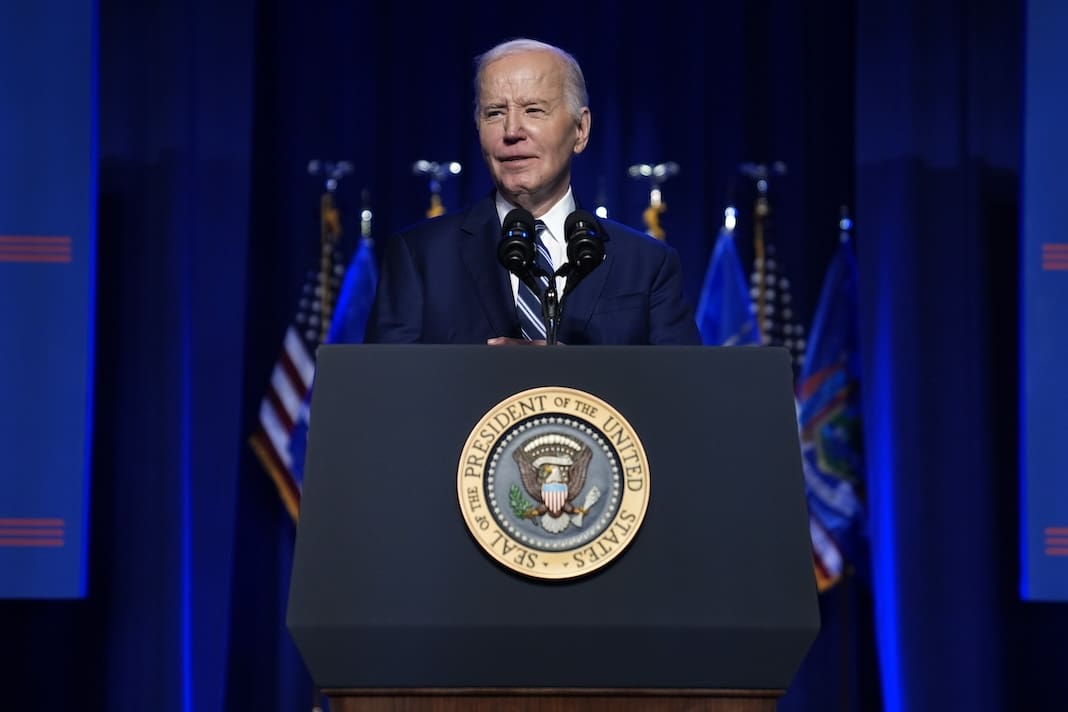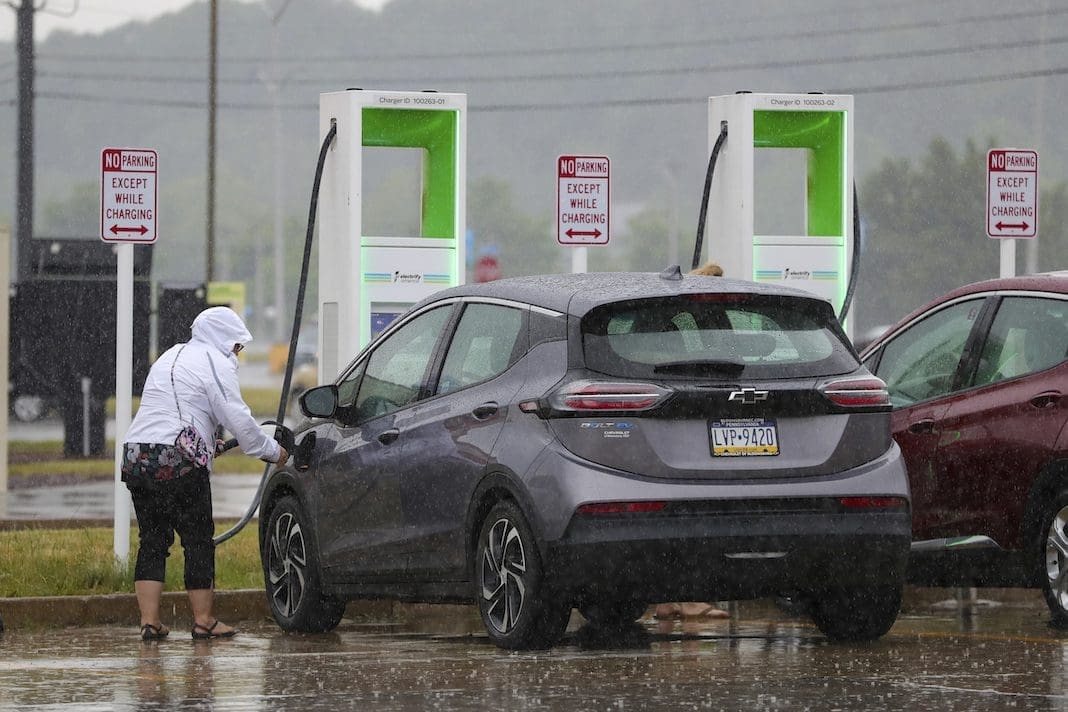Pennsylvania has an affordable housing crisis. Tearing down decaying homes could help.
Local municipalities need more state funding to demolish dilapidated homes and replace them with new housing, community leaders and lawmakers say.

Seven vacant homes line the street where Braddock Councilwoman Chardae Jones lives.
They are dilapidated remnants of another time, when steel mill workers filled the borough, located about 10 miles southeast of Pittsburgh.
Now, in a borough that was home to Andrew Carnegie’s first steel mill and has lost about 90% of its population over the past century as the steel industry has hemorrhaged jobs and shuttered mills, vacant homes are commonplace in Braddock. If you peek in the windows, you can see some of them are still filled with the furniture left behind by workers who fled after steel mills closed in the 1980s.
“A lot of people left; they never came back,” said Jones, who replaced U.S. Sen. John Fetterman as Braddock’s mayor in 2019 and has gone on to serve on its council.
Decades later, the houses remain, empty and decaying — shells of their former selves that are too long abandoned to be habitable. Jones said U.S. Steel is the largest employer in the area, but the jobs have dwindled and the economy has taken a severe hit. Braddock’s last grocery store is long gone, its hospital closed in 2010, much of the business district is for sale, and about 30% of its 1,721 residents live in poverty.
In a borough where the annual budget was a little less than $1.5 million last year, there’s little to no money to tear the empty homes down. State and federal funding, along with other initiatives like tax forgiveness, are desperately needed to help small, struggling communities demolish decaying homes and replace them with affordable housing or other community assets, Jones said.
“We need housing,” Jones said. “We can’t take the stock of housing and fix it. Help us fix our housing issue, and that would help us build our tax base, which in turn will help us build our economy.”
Pennsylvanians’ struggle to afford housing
Braddock is far from alone in needing housing, and especially affordable housing, in Pennsylvania.
Close to one-quarter of the state’s households are struggling to afford their most basic needs, including housing and food, even though they’re earning wages that place them above the poverty line. United Way of Pennsylvania, a nonprofit that advocates for equitable access to health care, education, and financial stability, reported in 2023 that 1.4 million commonwealth households were living above the poverty line but could not afford rent, child care and grocery bills. Another 12% of Pennsylvania households are living below the federal poverty line.
Even if people are able to come up with money for housing, they have to find something that’s affordable, and that can be challenging in a state where there’s a significant dearth of affordable housing units.
The National Low Income Housing Coalition reported in 2022 that Pennsylvania needed 265,537 units for extremely low-income households. To qualify as extremely low-income, a four-person household’s income cannot exceed $26,200. Twenty-seven percent of renters in Pennsylvania — 447,362 people — qualify as extremely low-income, according to the National Low Income Housing Coalition. Meanwhile, the state in 2022 also needed 224,020 housing units for people living at or below 50% of the area median income, the coalition said.
And once they secure housing, many face being displaced. A 2022 report from the Keystone Research Center found that 30% of renter households were either very likely or somewhat likely to face eviction or foreclosure. That amounts to 471,638 households.
What can be done to increase affordable housing?
To address how state lawmakers can expand affordable housing in Pennsylvania, Democratic state Rep. Abigail Salisbury, whose district in western Pennsylvania includes Braddock, led a legislative hearing on the matter Monday.
During that hearing, community leaders, including Jones, spoke about the need to allocate more state funding for affordable housing, including to tear down vacant homes that have deteriorated too much to be rehabilitated and replace them with housing that’s accessible for people with a range of incomes.
“We know there are countless homes in our area that have been deserted and are sitting vacant,” Salisbury said in a press release issued after the hearing. “We also know we have a housing affordability problem that needs to be addressed. We can fix one issue by fixing the other. Tearing down and remediating blighted properties will allow us to put up new, low-cost housing, leading to a cleaner and more prosperous community.”
Salisbury told the Pennsylvania Independent that the state should provide funding to municipalities to tear down homes that cannot be rehabilitated, as well as dollars for people to renovate houses that can be salvaged.
Gov. Josh Shapiro, a Democrat who took office in 2023, is working to boost affordable housing in the state. Last week, Shapiro’s administration announced it would distribute a little more than $12 million for affordable housing efforts in 20 counties through the federally funded HOME Investment Partnership Program.
In his 2024-25 budget proposal, the governor is asking for $50 million for the Whole Home Repairs program, which provides grants to homeowners for a variety of home repair projects. Last week, Fetterman introduced federal legislation that would create a national Whole Home Repairs program.
Shapiro’s budget proposal also requests $10 million for the Homeless Assistance Program, which provides funding for rental assistance, emergency shelter, eviction prevention, and other housing services. The governor proposed another $5 million in matching funds for tenants to have access to legal representation in eviction proceedings.
These kinds of efforts to address affordable housing could bring significant change to Pennsylvania, and not only keep families in the state but also draw in new ones, Salisbury said.
“Western Pennsylvania is hemorrhaging people,” she said. “We lost a congressional seat after the last census, so we can draw new people to invigorate some of these communities that have lost significant, significant population in recent decades, but we have to be ready to receive them.”
Jones envisions a Braddock where new residents see what she has long known: a hometown filled with people who will fight for, and endlessly love, their community.
Perhaps, Jones said, in the days to come, people will pay attention to Braddock not for its misery but for its success. Maybe there will be a grocery store again.




